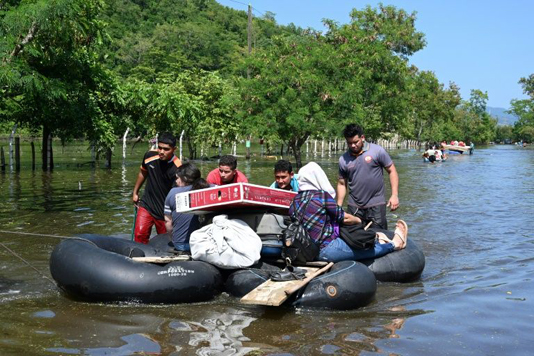TEGUCIGALPA, Nov 14, 2020 (BSS/AFP) – With a second major hurricane closing in on more than 30 million people in Central America, Honduras said Friday its army would move thousands to shelters days after deadly storm Eta.
Last week Eta killed at least 200 people in mountainous Nicaragua, Honduras and Guatemala, where storm rains burst river banks and triggered landslides as far north as Chiapas, Mexico.
Now, the US National Hurricane Center in Miami has confirmed what few here could have imagined: another major hurricane.
The NHC forecasts Tropical Storm Iota to become a major hurricane on a path right into the same shell-shocked countries, starting in Nicaragua and Honduras late Sunday or early Monday — less than two weeks after Eta hit the area.
The shock will be significant as Honduras, Nicaragua and Guatemala, whose populations total more than 30 million, have not had time to dry out much less recover from Eta.
“Our red alert (in Honduras) orders mandatory evacuations” using military and police, Julissa Mercado of Honduras’ Emergency Response Agency, told AFP.
In Honduras some 40,000 people are still in shelters, meaning their stays are likely to be extended.
In Guatemala, the National Disaster Response Agency issued warnings for the provinces of Peten, Izabal and Alta Verapaz in the north and northwest, where many mountain villages remain cut off by Eta.
The agency urged people to head to shelters as soon as possible if necessary.
“Our ground is already oversaturated,” said Guatemala’s President Alejandro Giammattei.
“So it’s to be expected that we will have more farming and infrastructure damage,” he warned after meeting his Honduran counterpart, Juan Orlando Hernandez, in Guatemala City.
Eta hit the Caribbean coast of Nicaragua as a Category 4 storm, and was one of the strongest November storms ever recorded.
Warmer seas caused by climate change are making hurricanes stronger for longer after landfall, increasing the destruction they can wreak on impact, scientists say.
This year’s hurricane season has seen a record 30 named tropical storms wreak havoc across the southeastern United States, the Caribbean and Central America.
The NHC was even forced to switch to the Greek alphabet after 2020’s storms exhausted its list of Latin names.



